Indoor Home Swimming Pools: Fabulous Designs for Your Home
Find out if indoor home swimming pools are worth the investment and what to consider with our handy guide full of ideas, inspiration and advice
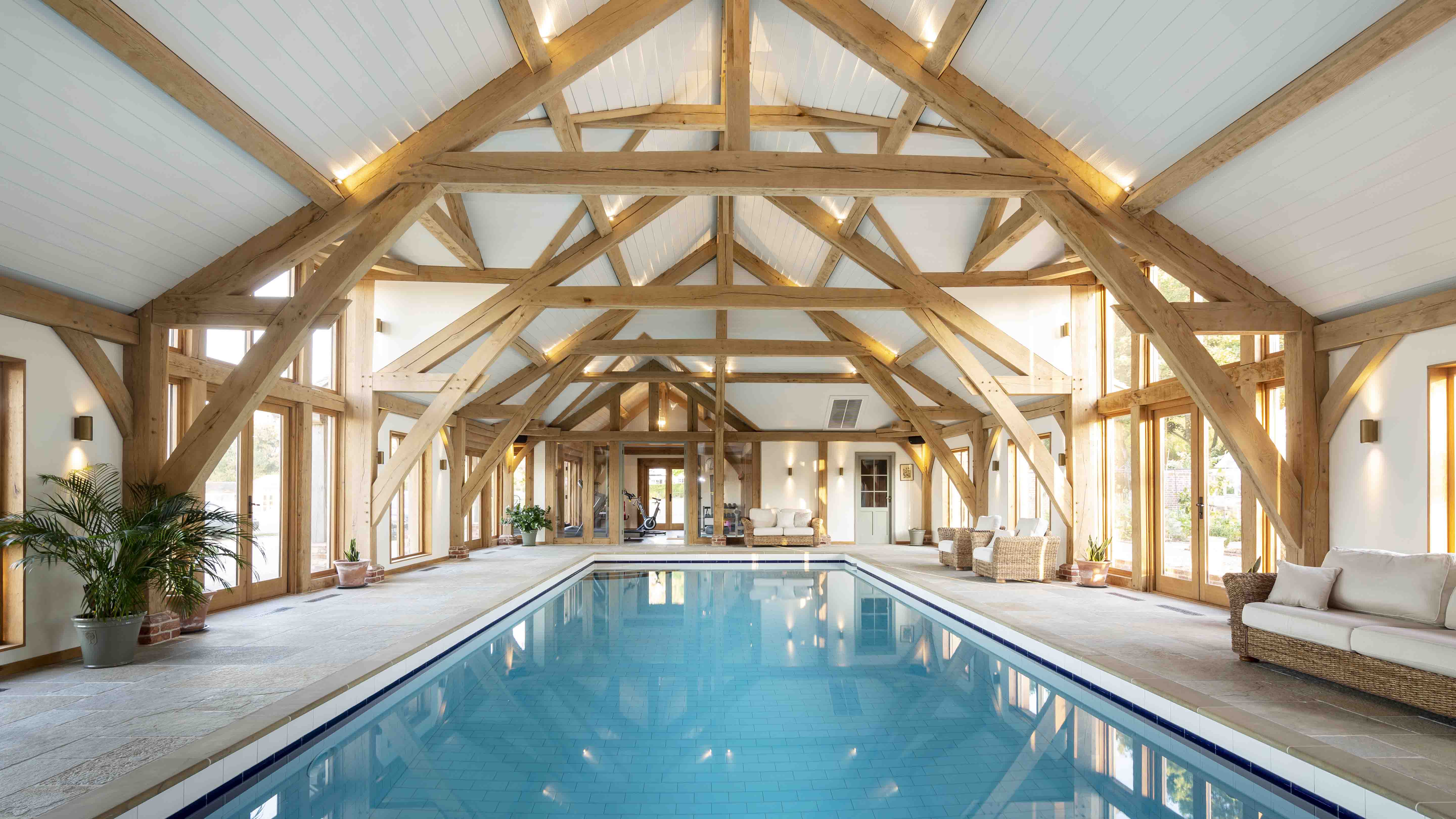
Indoor home swimming pools are seen one of life's great luxuries and extravagances, but as homeowners are exercising more at home we're seeing an increase in this feature being included in extension and self build designs.
As with outdoor swimming pools, they offer a chance for relaxation in the privacy of your own home, as well as a beautiful space (when designed properly) for a calming retreat.
Find out what to consider before embarking on creating a new indoor swimming pool in a home, how to plan, what benefits they offer and the latest ideas.
Are Indoor Home Swimming Pools a Good Idea?
Although indoor swimming pools are less popular than outdoor designs (with pool specialist Compass Pools finding only around 20% of the pools they install are indoors), if you're after a serene place for exercise without leaving your home then they're a good investment.
Not only are they easier to maintain than outdoor pools in terms of cleaning (no leaves of detritus to worry about) and possibly heating, they can be used at any time of year and weather.
"Certainly over the last couple of years this has been boosted with the restrictions on going abroad due to Covid," explains Adam Knibb, director of Adam Knibb Architects. "The integration of pools within properties has been slowly gaining momentum within building projects.
"Certainly within our works, clients have aspirations to either have a pool for the first time or to move an external pool to an internal set up. The internal benefits allow you to use the pool all year round, providing there is space."
However, you will need to carefully discuss dehumidification with your designer as this will be essential in a functioning pool space.
1. Customise an Indoor Pool to Your Lifestyle
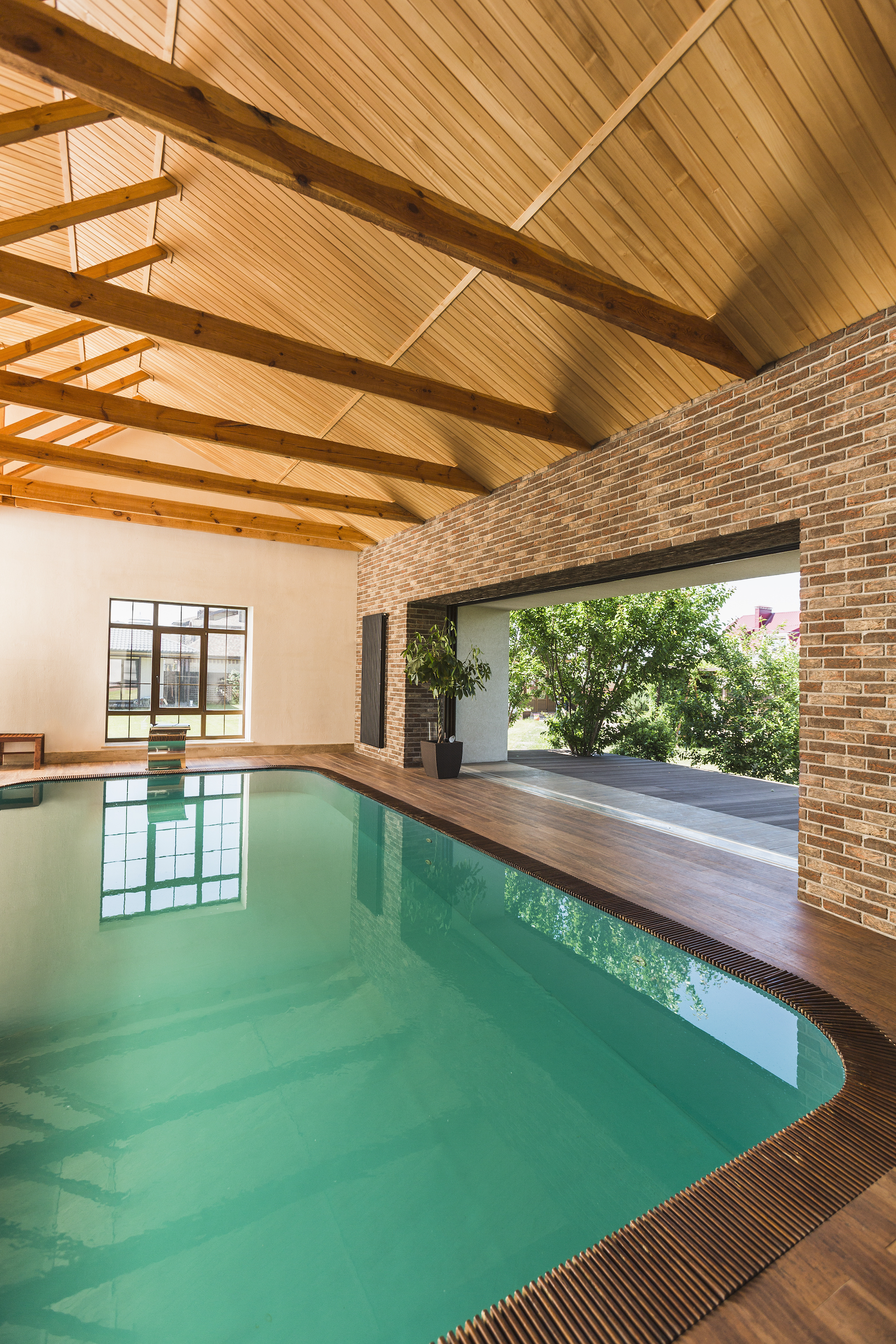
"Consider how the pool will be used," begins Simon Baker, director of Nash Baker Architects. "For example, will it be used for kids parties, swimming lessons, endurance training or as a relaxing spa? This will help inform the optimum size, depth and features, such as massage jets or counter-current swim jet.
"Understanding how the pool might be used helps us design the entire space; with the poolside being just as important for some, often with additional spaces for spa facilities such as saunas and hammams.
"Swimming pools are highly technical with a lot of mechanical and electrical equipment to hide. Architects and designers spend a lot of time coordinating the various elements of the design to ensure this is all hidden from sight but can still be accessed and maintained easily and safety.
"Consideration is also given to the long-term suitability of materials, as chlorinated swimming pools produce a humid and corrosive environment which will shorten the lifespan of normal building materials, and/or require additional upkeep."
2. Create an Indoor Lap Pool
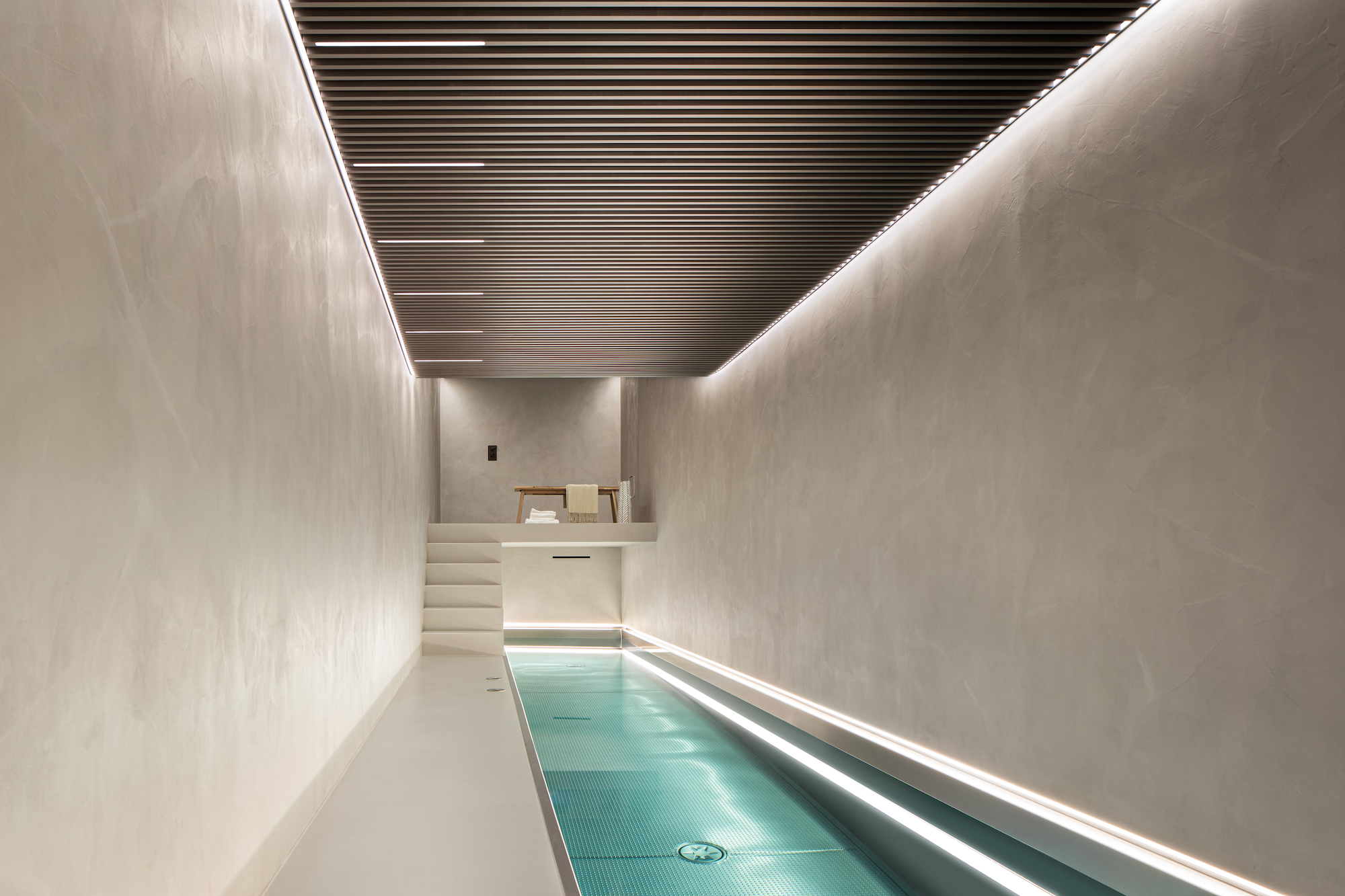
For a pool that is ideal for exercise, aim for a size of at least 14 metres in length, but the width of the pool can be dictated by budget. Lap pools can also allow for interesting, rectangular designs.
Lap pools don't tend to feature graduating steps from floor to in the water as this reduces its usable area, so install metal pull-up rails and vertical steps you would see in the deep end of a gym pool.
3. Go Small with a Hydrojet or Large Hot Tub
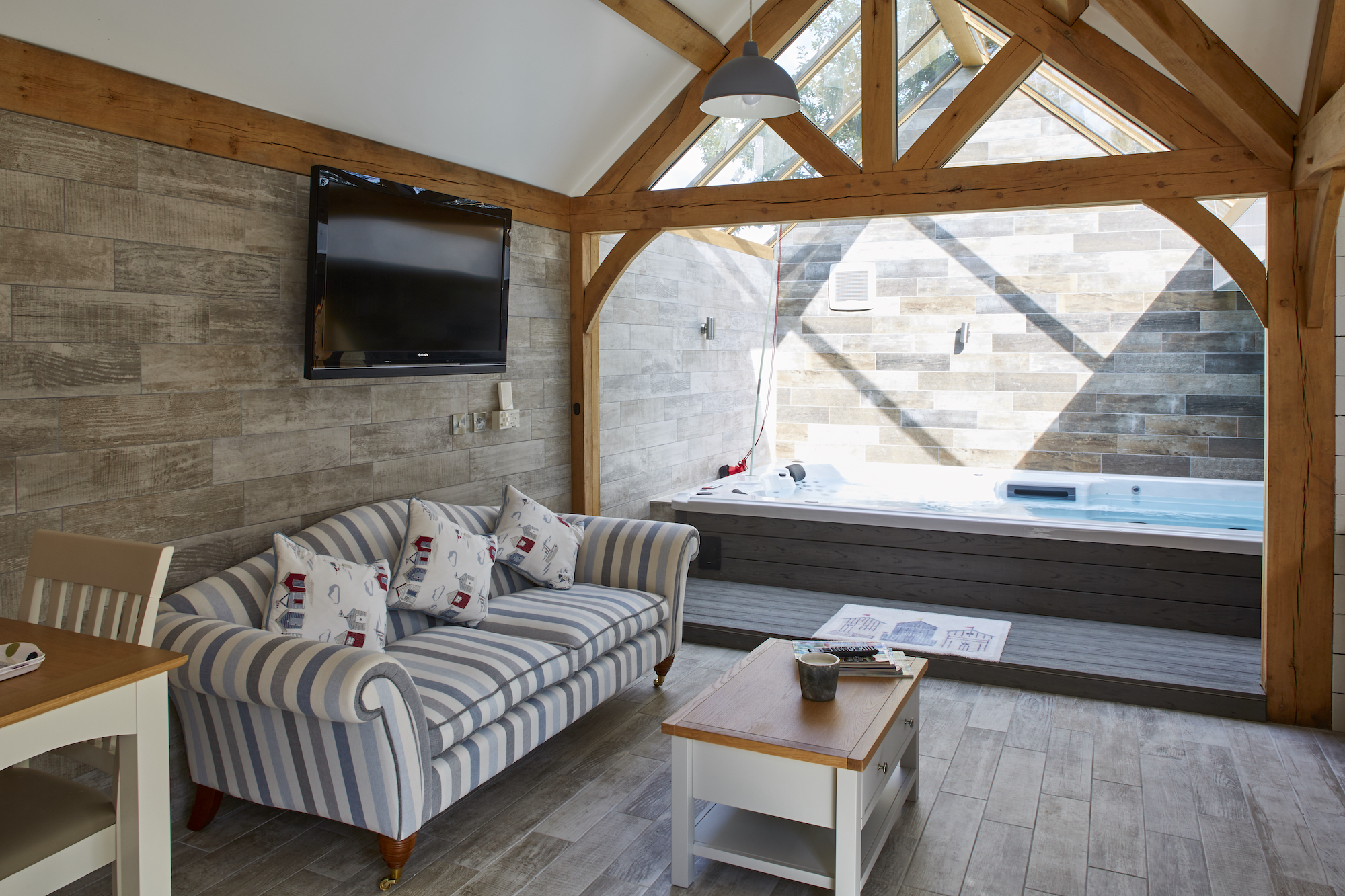
If you don't have the space or the funds for in-ground, large swimming pool ideas, consider installing a hydrojet pool.
"A hydrojet is a pump that creates a stream of water that you can swim against," explains energy efficiency expert David Hilton. "It is similar to a treadmill that allows you to swim for miles without actually moving an inch. These pumps can cost around £1,200 upwards."
A hot tub is another alternative if you're after a place to relax. This above-ground hot tub was built in a garden room which was designed to match the same interior and exterior styles as the main house.
4. Keep an Indoor Pool Eco

Although pools aren't know for being especially eco friendly, developments in the last decade have dramatically reduced their impact. Heat pumps for swimming pools reduce reliance on traditional heating systems, and an increased focus on better insulation in houses means the carbon footprint is made smaller.
An alternative to a traditional indoor pool is installing natural swimming pools. Although better known as outdoor features, indoor designs are also chemical free.
While building this large pool house (designed by Oakwrights), 21 boreholes were drilled into the ground during the groundworks. The system now works as one continuous pipe loop to absorb the warmth from the ground and transfers it up the the pool house to heat not just the structure and the pool, but also the homeowner's main house and a nearby cottage.
The building also features high levels of insulation and an air ventilation system to keep moisture levels down in the oak frame building.
5. Find the Right Position for an Indoor Pool
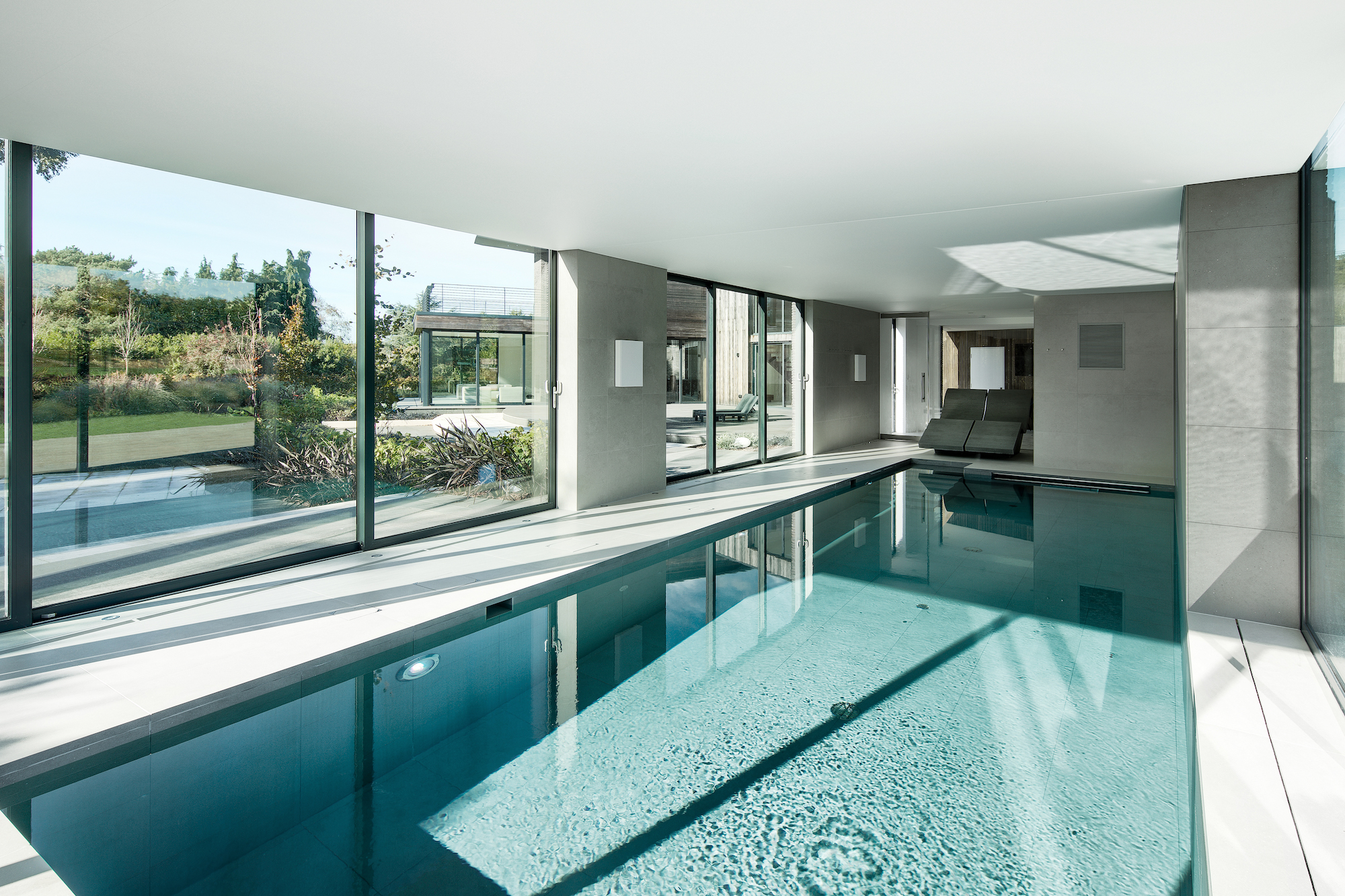
"Having a pool can give a huge amount of pleasure — either for fun or fitness (or both!)," says Adam Knibb. "Site location is a key factor in positioning a pool — the enjoyment of an internal pool is that you can use whatever the weather but when the sun is out to have the flood the space and open doors gives an internal pool another dimension."
Some homeowners purpose-build basements or extensions for their indoor pools, while others use bespoke garden room ideas to house the new addition, depending on the space and budget available.
No matter where the position of your indoor pool, be sure to have good access to a decent bathroom or changing area nearby.
6. Create a Space for Wellbeing
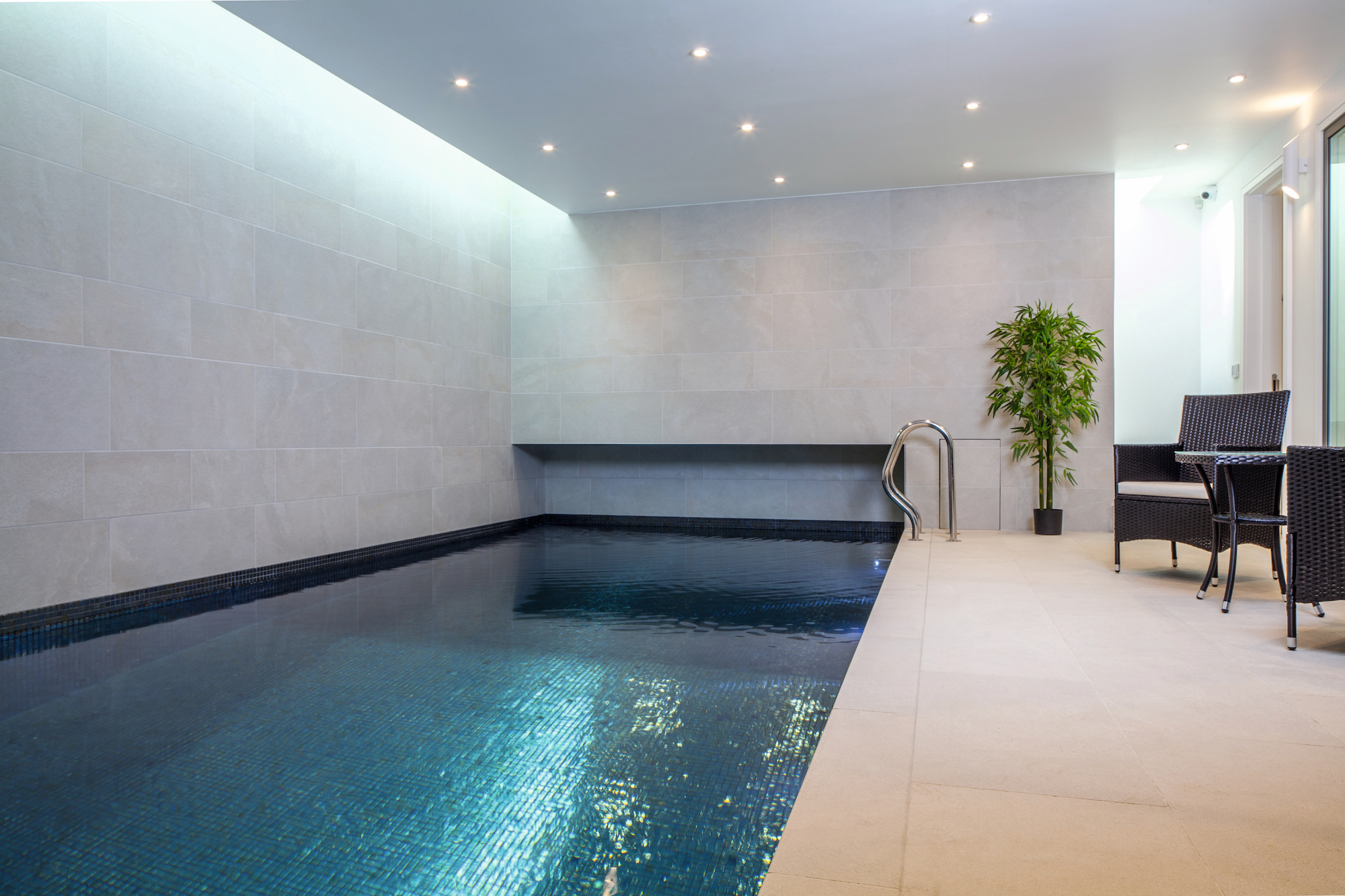
When designing an indoor pool, hone in on the relaxing atmosphere created by spas and hotels and bring these ideas into your home.
If your pool in located in a basement, boost a feeling of wellbeing using sun pipes or carefully positioned light wells and rooflights, as in this modern pool.
Note that the homeowners have specified a good lighting design with dimmable spotlights (appropriate for high humidity and wet areas) so the pool can be used at night time in a calming environment.
7. Specify the Right Materials For an Indoor Pool
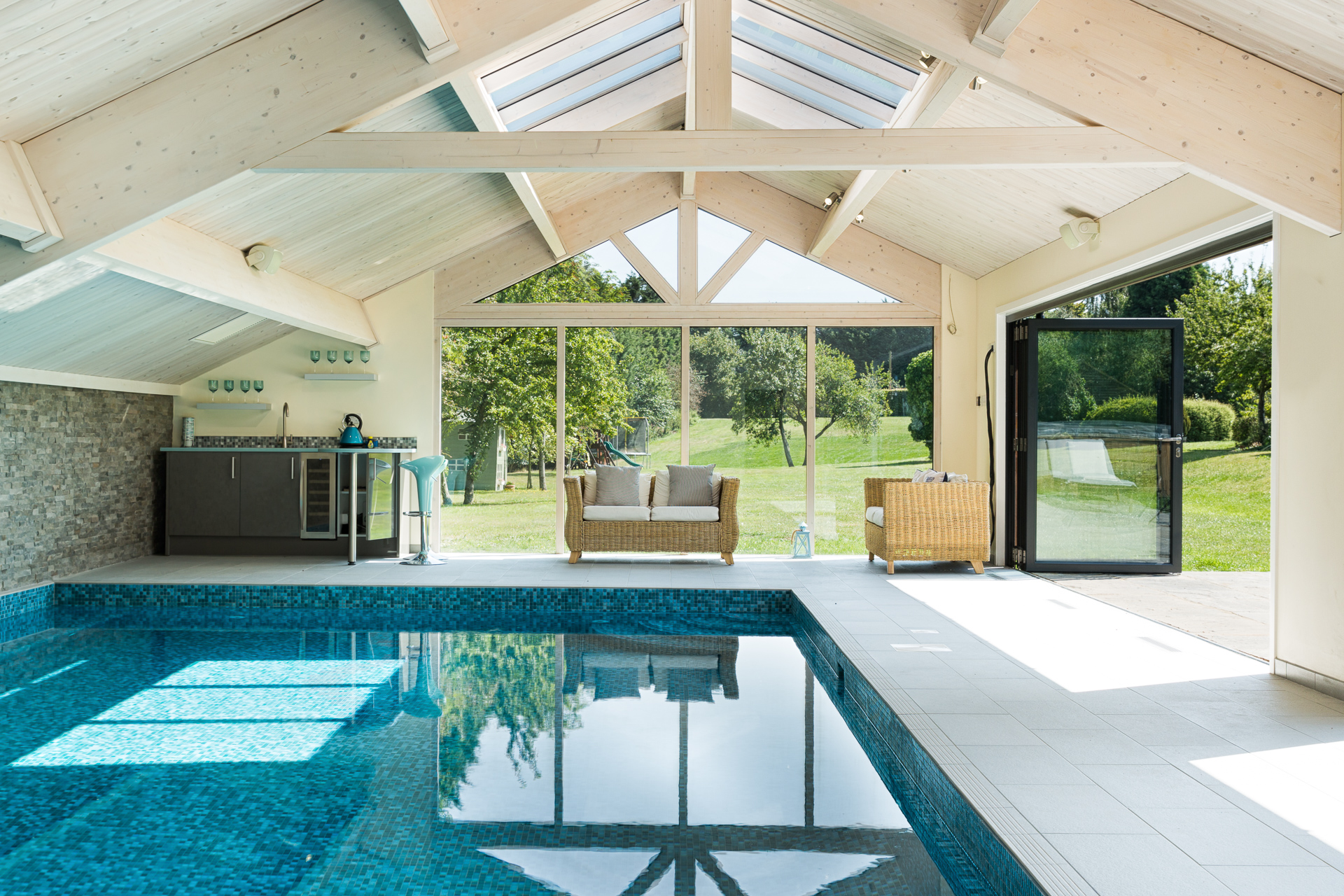
Unlike an outdoor pool, decking might look a little odd surrounding your pool area so most homeowner choose tiles or natural stone to line the design.
"Simple use of internal materials can help the pool setting," says Adam Knibb. "We like to use stone on the floors which flow into the pool and then break up the walls with timber cladding."
When choosing tiles, look for products with anti-slip properties, such as porcelain and ceramic, or a mosaic pattern.
8. Introduce an Inside-Outside Pool
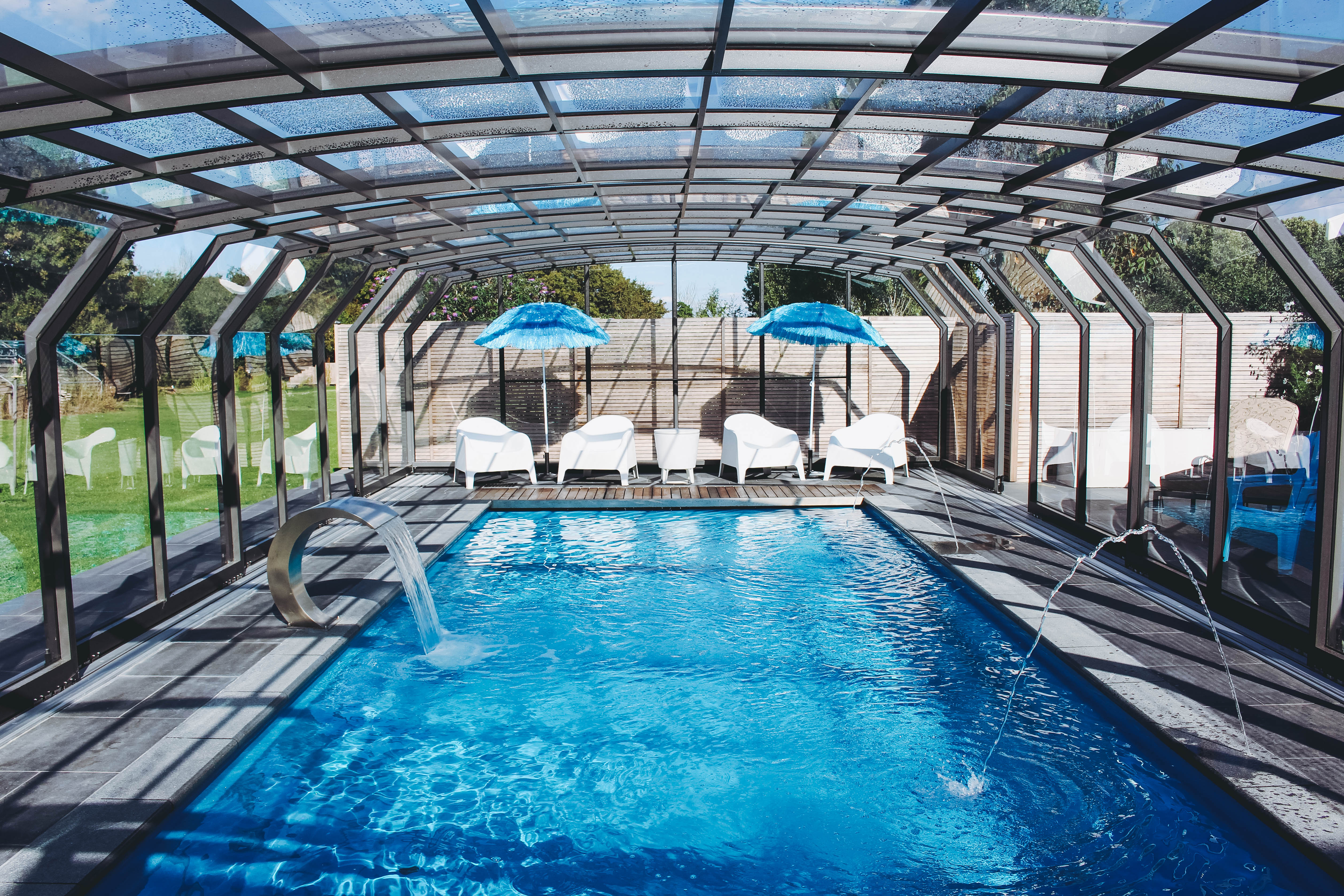
Want the view of an outdoor pool, but the shelter of an indoor one? Build a glass frame pool house with special coating to reduce solar gain.
This stunning example lets users experience the weather – come rain or shine – while swimming or relaxing.
How to Heat an Indoor Pool
"Indoor pools still need to be insulated and the air temperature in the pool room needs to ideally be a minimum of 3ºC warmer than the water to reduce evaporative heat loss," explains David Hilton.
"As an example, you may have the pool water temperature at around 25ºC and therefore the room temperature will need to be around 28ºC. That is around 10ºC warmer than your normal room temperature and means that you may need to increase the insulation in the fabric of the building.
"At higher temperatures, air has the ability to hold more water vapour. It is therefore still a good idea to have a good pool cover on an indoor pool. You will also need to ventilate the room at a much higher rate than is required for normal habitation, in order to avoid condensation. While the pool cover is closed you can often lower the room temperature as well.
"A specialist mechanical heat recovery with ventilation (MVHR) unit is required that can handle the high volumes and corrosive nature of the air as well as have the ability to apply efficient heat and modulate its output."
Is an Indoor Home Swimming Pool a Good Investment?
"Whether, swimming pools are a good investment will depend on the cost of the project, the quality of the pool and poolside, and whether future purchasers see added value in having a pool," explains Simon Baker.
"An indoor swimming pool in your own home might be the ultimate luxury for some, and an expensive headache for others. Therefore, I would encourage anyone considering an indoor swimming pool to ask themselves how much they will use it, and balance this against the upfront cost, and ongoing time and cost associated with maintaining a pool.
"Swimming pools also consume large amounts of water and energy, so I think there is an environmental and ethical perspective which client should be informed about before diving into a pool project. The environmental impact can be mitigated through the use of renewables to heat and maintain the pool temperature but when a site supports it, I encourage clients to also consider natural swimming pools."
How Much Does it Cost to Build an Indoor Pool?
"For indoor pools you would add £40k to the base pool price [starting at around £60k] for an air handling system, then the cost of the building which is generally around £2k/m2," advises Alex Kemsley of Compass Pools.
"All in indoor pools generally fall as a project around £350-500k."
Do You Need Planning Permission for an Indoor Pool?
"While you can, in some places, install an external pool under Permitted Development and internal pool will most likely always need planning permission due to the size of the building required to enclose the pool — this tends to sit outside the boundaries of Permitted Development," explains Adam Knibb.
"The combination of pool, poolside and plant room will require considerable space, and invariably will require a purpose-built space or structure," says Simon Baker. "In central London, where space is at a premium, this might be in the form of a basement. Elsewhere this could be a freestanding garden structure or extension to the house.
"Whether you require planning consent will depend upon site constraints and local authority. Some site will be able to build basements, construct large single storey outbuilding and extensions using their Permitted Development (PD) rights.
"However, owners should seek professional advice as there are complex rules and restrictions which will limit what can be done under PD. Even if your structure doesn’t require planning consent, the mechanical equipment such as air-source heat pumps might."
Get the Homebuilding & Renovating Newsletter
Bring your dream home to life with expert advice, how to guides and design inspiration. Sign up for our newsletter and get two free tickets to a Homebuilding & Renovating Show near you.
Amy is an interiors and renovation journalist. She is the former Assistant Editor of Homebuilding & Renovating, where she worked between 2018 and 2023. She has also been an editor for Independent Advisor, where she looked after homes content, including topics such as solar panels.
She has an interest in sustainable building methods and always has her eye on the latest design ideas. Amy has also interviewed countless self builders, renovators and extenders about their experiences.
She has renovated a mid-century home, together with her partner, on a DIY basis, undertaking tasks from fitting a kitchen to laying flooring. She is currently embarking on an energy-efficient overhaul of a 1800s cottage in Somerset.

